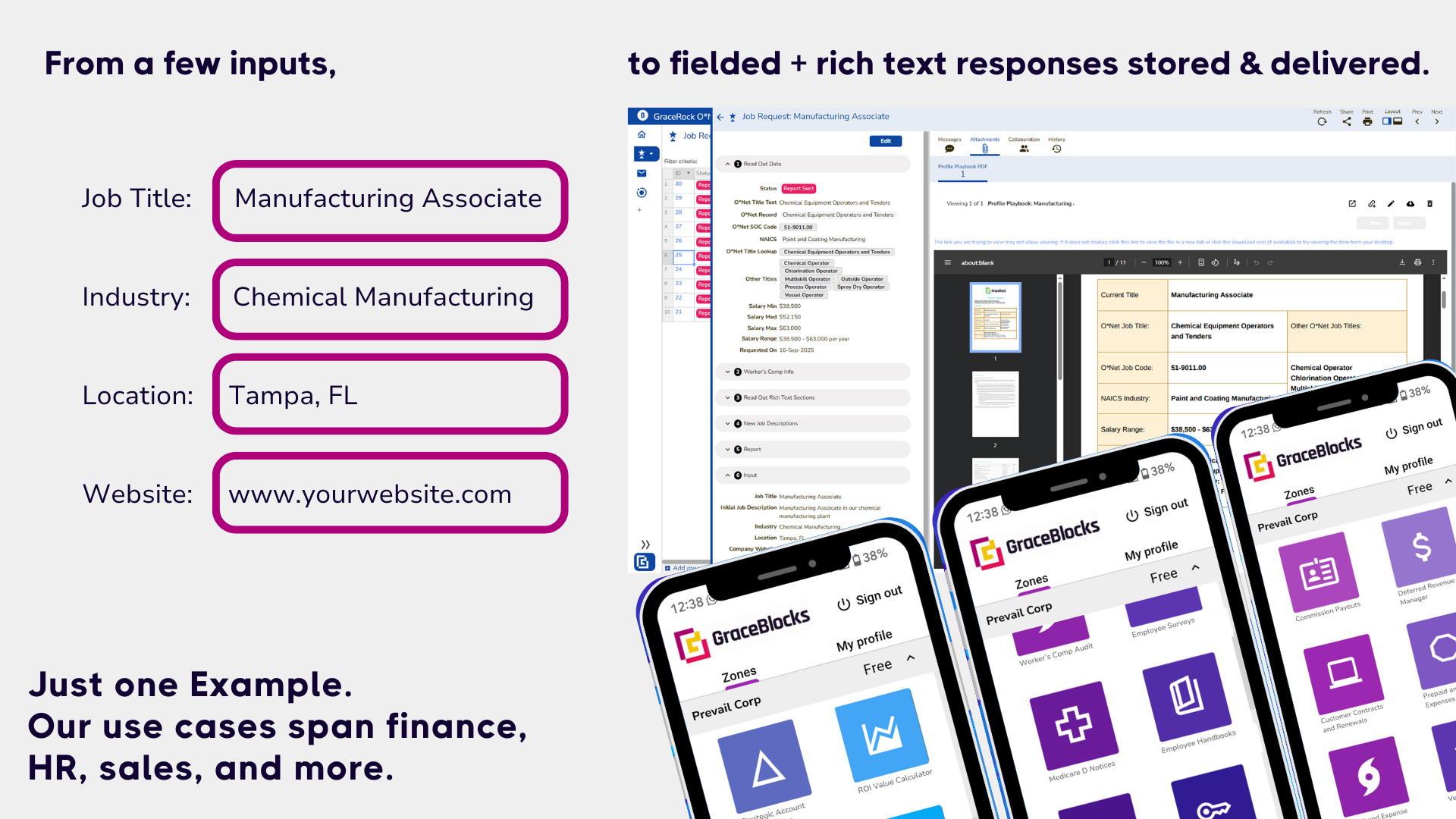


Earlier this year, we started talking about a new initiative at GraceRock: the building of GraceBlocks. Each post we’re covering a pillar until we have the complete set of 9. This week, that spring in our step is not just from the recent dose of sunshine, it’s because we get to talk about Pillar 8: Workflow and all it does to make work…flow!
Workflows are about process. It’s the orchestration of repeatable activity, the systematic organization of resources into processes that help to provide materials, services, or information. And for GraceBlocks, it’s also about automation. These are the two problems we are focused on under the Workflow Pillar. 1) What are the steps for how work gets done? 2) And what steps can be automated?
What are the steps?
This is about ensuring the right people can have access to the right things: Who are all of the actors in my process? How will this flow of activity occur? Who will do what, and where? Finally, what features does a Block need to support this? After decades of building flows that look something like the image below, I am here to say most people HATE looking at these. But for the person architecting the flow of work, they are essential maps with each box representing real work that someone needs to do somewhere. They can also represent opportunities for automation.

I won’t bore you with the detailed process flow, suffice to say it goes something like this: First X happens, then, Y and/or Z now happen, and so on and so forth. That first thing could be a text message from someone or an online form being submitted. In many cases involving online forms, whoever submits the online form will need to be able to log in somewhere make updates or view status on progress. Then on the other side of the fence, there is someone managing these incoming Xs, routing them to the Y or Z step, moving them through processes, and making subsequent things happen that then can cause more X, Y, and/or Z’s happen. Basic ingredients we need to support this process:
- Text messaging
- Online form
- Back end system where data and exchanges are stored, managed, grouped, filtered, shared, and generally collaborated upon.
With these basic ingredients, you’d be amazed at just how much work can get done. Our goal with GraceBlocks is to start with the basics first and then add more and more ingredients that allow expanded and more complex workflow scenarios to be supported.
What can be automated?
After plotting the boxes on the page, the fun really comes with evaluating opportunities for automation vs. requiring a person to tediously push the same lever just to keep the flow of work happening. How can we make X, Y, and Z happen automatically? A lot of automation will live inside our integration framework with tools like Zapier. But we’ll also be evaluating what native built-in automation options are natural extensions for us as we continue to grow.
Want to stay informed?
Request early access here. And we’ll keep you posted as we continue building GraceBlocks!
Read about the other pillars here:
- 9 Pillar’s summary post
- Pillar #1: Security
- Pillar #2: Ease
- Pillar #3: Search
- Pillar #4: Collaboration
- Pillar #5: Integration
- Pillar #6: Control
- Pillar #7: Tracking
- Pillar #8: Workflow
- Pillar #9: Intelligence



.png)






